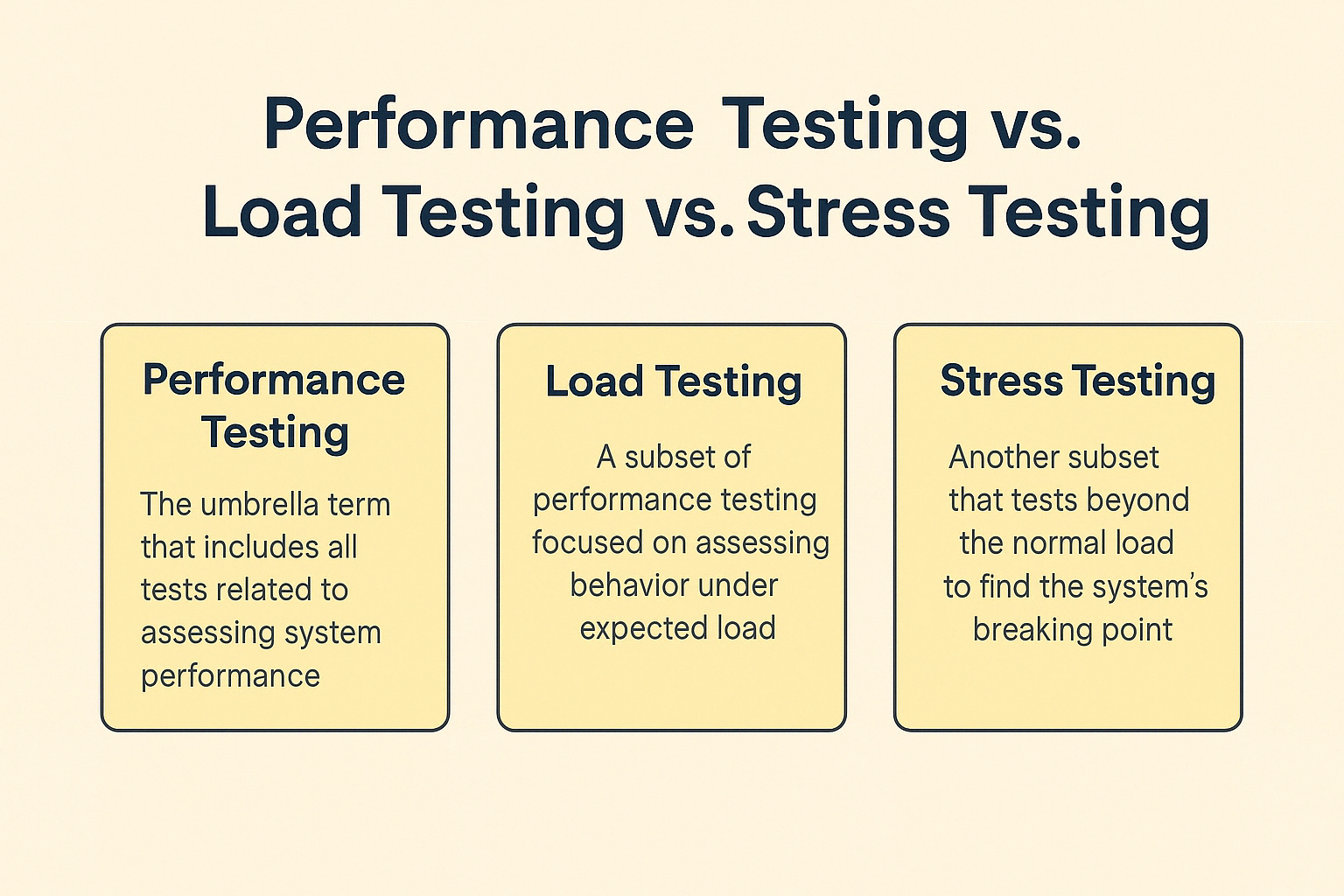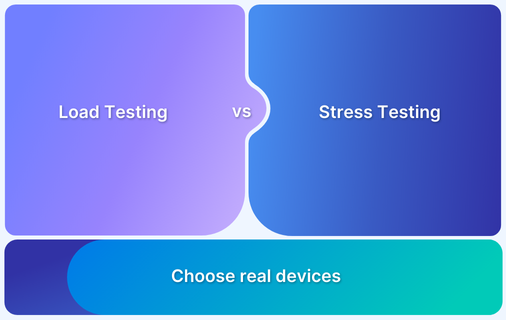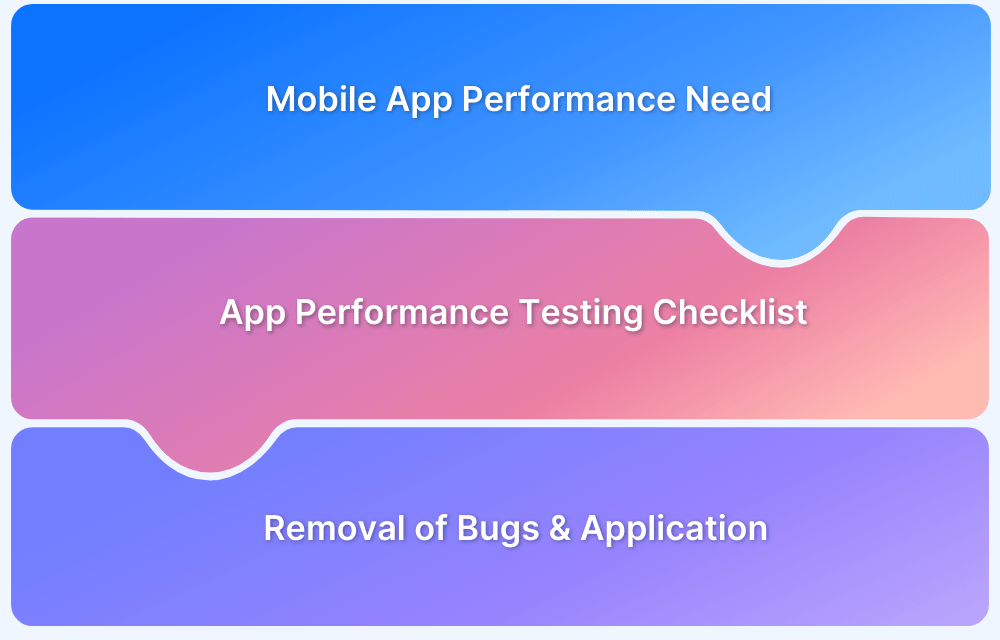Understanding the nuances between load testing and performance testing is critical for developers, testers, and stakeholders alike.
Overview
What is Performance Testing?
Performance testing is a broader testing discipline focused on evaluating the speed, responsiveness, scalability, and stability of a software application under a variety of conditions.
What is Load Testing?
Load testing is a type of performance testing that evaluates how a system behaves under expected user loads.
Load vs Performance Testing
While load testing gauges system performance under expected or peak load, performance testing measures the overall speed, stability, and scalability. In short, load testing zeroes in on user capacity, while performance testing aims to measure overall system behavior and identify areas where performance improvements can be made.
This article will explore the key distinctions of load and performance testing, discuss their individual purposes and how to get started, introduce top tools, and lay out best practices.
What is Load Testing?
Load testing is a type of performance testing that evaluates how a system behaves under expected user loads. The main goal is to determine how the system performs when multiple users access it simultaneously. It answers questions like:
- How many users can the system handle at once?
- At what point does performance start to degrade?
- Are there any bottlenecks under high user activity?
For example, imagine launching an e-commerce website during Black Friday sales. A load test can simulate thousands of users browsing and purchasing simultaneously, to help ensure your platform remains stable and performs efficiently.
Load testing is not about breaking the system but about assessing its behavior under typical conditions. It prepares your application for peak usage scenarios and helps uncover potential weak spots before your users do.
What is Performance Testing?
Performance testing is a broader testing discipline focused on evaluating the speed, responsiveness, scalability, and stability of a software application under a variety of conditions. It includes different types of tests such as:
- Load Testing
- Stress Testing
- Spike Testing
- Endurance Testing
- Scalability Testing
Performance testing helps ensure your application meets performance benchmarks and delivers a high-quality user experience under both normal and extreme conditions.
Performance Testing vs. Load Testing vs. Stress Testing
Understanding the differences between these testing types can be confusing. This section analyzes and breaks them down for easy comparison:
| Feature | Performance Testing | Load Testing | Stress Testing |
|---|---|---|---|
| Objective | Measure system metrics like overall speed, stability, and scalability. | Test system behavior under expected or high load | Test under extreme load |
| Scope | Broad | Specific | Extreme |
| Usage Scenario | Regular monitoring and analysis | Prepare for peak load | Find system limits |
| Typical Metrics Measured | Response time, throughput, etc. | User capacity, latency | Failure points, recovery time |
| Outcome | Overall system performance | Load handling capability | Maximum capacity and robustness |
The basic difference of these testing types can be summarized in the following manner:
How to Get Started with Load and Performance Testing
Starting with load and performance testing doesn’t have to be daunting. Here is a simple step-by-step guide:
Step 1: Define Objectives
Decide on your goals. Start by asking, what are you trying to achieve? Are you testing for performance under normal load or preparing for peak load periods? Accordingly take the next steps.
Step 2: Identify Critical Scenarios
Pinpoint user journeys and components that are vital to your application’s success. Focus on high-traffic areas.
Step 3: Establish Metrics and Benchmarks
Define acceptable levels of response time, throughput, and error rates based on business requirements or industry standards.
Step 4: Select the Right Tools
Choose tools that align with your tech stack, budget, and team expertise.
Step 5: Create Test Scripts
Simulate user behavior and workflows using your selected tools. This often involves scripting user interactions.
Step 6: Execute Tests
Run tests under controlled environments first. Monitor results and analyze performance metrics.
Step 7: Analyze and Optimize
Review your findings. Are response times acceptable? Are there bottlenecks? Make necessary code or infrastructure changes.
Step 8: Re-Test
After optimizations, re-run your tests to confirm improvements and ensure consistent performance.
Read More: Guide to UI Performance Testing
Best Load and Performance Testing Tools
Numerous tools are available to assist with load performance testing. Below are some of the most popular and effective tools that help teams simulate real-world traffic, monitor system metrics, and identify performance bottlenecks.
These tools vary in terms of scripting language, user interface, scalability, integration capabilities, and cost. Selecting the right one often depends on your specific use case, tech stack, and team expertise.
1. JMeter
Developed by Apache, JMeter is a popular choice for load testing web applications. It supports multiple protocols and allows for detailed performance analysis. Its GUI-based interface is beginner-friendly, and it can be extended with plugins. Great for both functional and performance testing.
Pricing Model: Open-source
2. Taurus
An automation-friendly wrapper for JMeter, Gatling, and other tools. Taurus simplifies test execution using YAML configuration files and integrates well into CI/CD pipelines. Ideal for teams seeking simplicity and automation in load testing.
Pricing Model: Open-source
Read More: How to Build an Azure CI/CD Pipeline?
3. Gatling
Known for its high performance and lightweight design, Gatling is ideal for developers who prefer scripting load scenarios in Scala. It offers excellent test reporting and is well-suited for modern development workflows.
Pricing Model: Open-source (with enterprise version)
4. Locust
A Python-based load testing tool that allows you to define user behavior in code. It’s highly scalable and easy to set up. Its simplicity and flexibility make it a favorite among Python developers.
Pricing Model: Open-source
Read More: Understanding Unit Testing in Python
5. BlazeMeter
A cloud-based platform that supports JMeter, Selenium, and other tools. BlazeMeter provides real-time analytics, distributed testing capabilities, and seamless integration with CI/CD workflows. It’s a powerful enterprise-grade solution with user-friendly dashboards and collaboration features.
Pricing Model: Commercial (free tier available)
Read More: Top 20 Performance Testing Tools
How to Select Load and Performance Testing Tools
Choosing the right tool is essential for effective testing. Here are some key considerations:
- Project Requirements: Understand the protocols, tech stack, and performance goals of your project.
- Ease of Use: Choose a tool that matches your team’s skill level and has a manageable learning curve.
- Integration Capabilities: Ensure it integrates with your CI/CD tools, version control, and reporting systems.
- Community and Support: Strong community support and documentation can make a big difference.
- Scalability: The tool should scale with your application and support distributed testing if needed.
- Reporting Features: Look for tools that offer real-time insights, rich dashboards, and historical reporting.
Best Practices for Load and Performance Testing
To make the most out of your testing efforts, follow these industry best practices:
- Test Early and Often: Integrate performance testing into the development lifecycle, not just at the end.
- Replicate Real-World Scenarios: Simulate realistic user behavior and traffic patterns. Also test on real-devices to catch UI changes under real user conditions. Therefore, it is best to integrate your performance testing efforts with tools like BrowserStack to test on 3500+ real-device-browser-OS combinations.
- Use Baseline Metrics: Establish performance baselines to measure improvements over time.
- Test in Production-like Environments: Use environments that closely mirror production for accurate results.
- Monitor System Resources: Keep an eye on CPU, memory, disk I/O, and network usage.
- Isolate Variables: Test one variable at a time to clearly identify performance bottlenecks.
- Automate Tests: Use CI/CD integration to run tests automatically and consistently.
- Involve Developers and Ops Teams: Collaboration helps address issues faster and more effectively.
- Document Everything: Maintain thorough documentation of test scenarios, configurations, and results.
- Prepare for the Worst: Include stress testing and failover testing to understand how your system behaves under duress.
Why Use Real Devices for Performance Testing?
Using real devices for performance testing can help you ensure that your application behaves as expected in real-user conditions. Using tools like BrowserStack can help you catch various changes under differing real-user conditions.
- Gauge Performance Metrics: Real devices depict the real CPU, memory, battery, and thermal limitations. Thereby, you can get reliable insights on app speed, responsiveness, and resource consumption.
- Real-World Network Behavior: Test under differing network conditions like 3G, 4G, 5G, or Wi-Fi, to learn how latency etc. affect your app.
- UI Rendering: Device-specific changes in screen rendering, animations and other UI aspects can be caught via real devices.
- User Experience Validation: Testing on real devices helps you delivers a smooth experience across a diverse user base.
Conclusion
Performance and load testing are crucial components of any successful software delivery process. While load performance testing focuses on ensuring your application can handle expected traffic, broader performance testing helps you assess responsiveness, scalability, and overall system health.
Whether you’re preparing for a product launch, optimizing an existing system, or aiming for continuous performance monitoring, investing in load and performance testing will pay off in reduced downtime, happier users, and a more resilient product.







